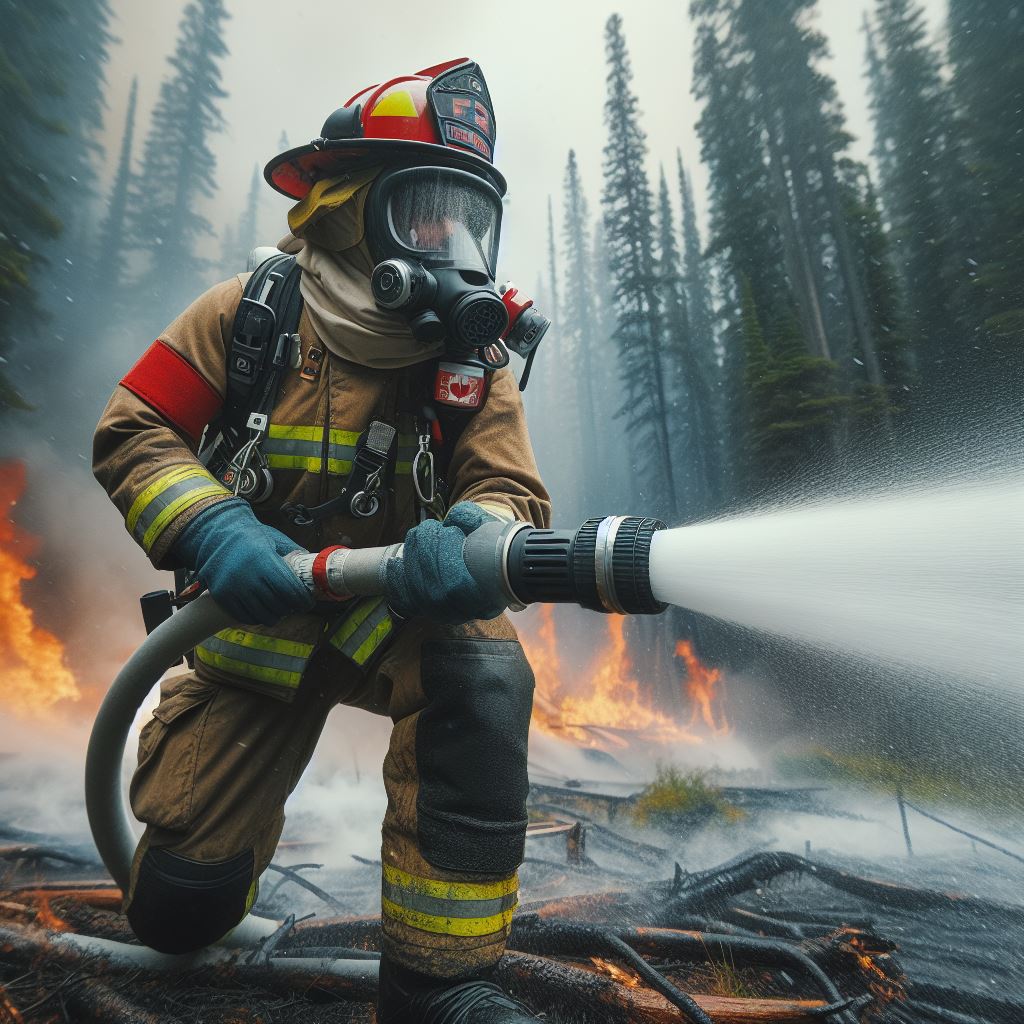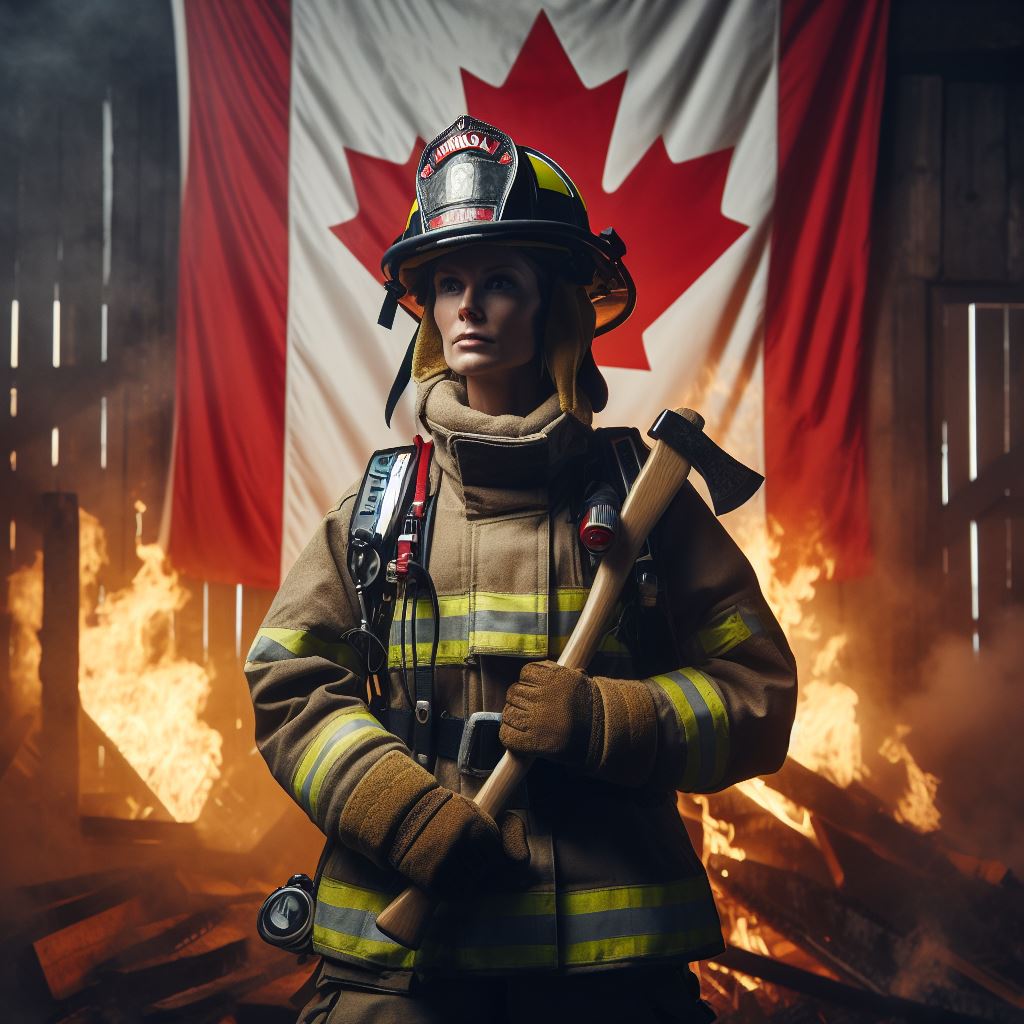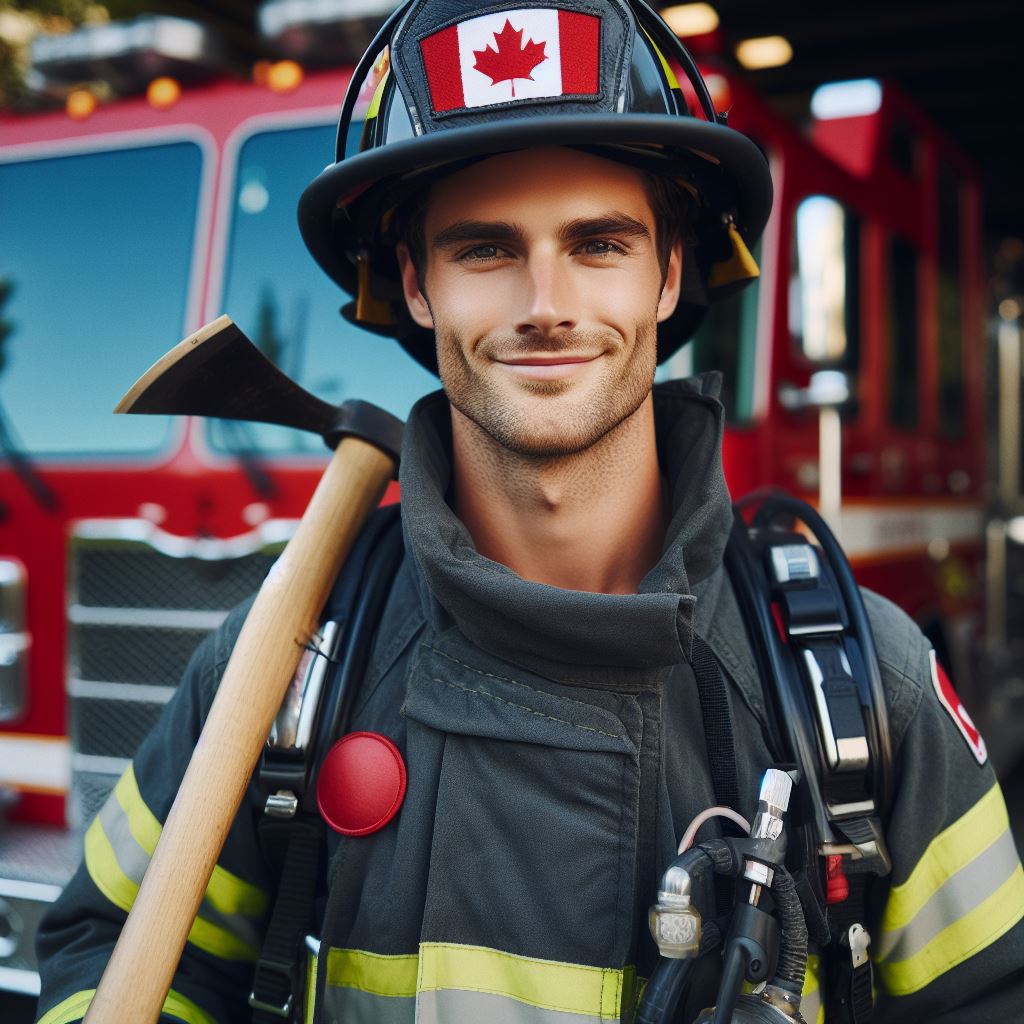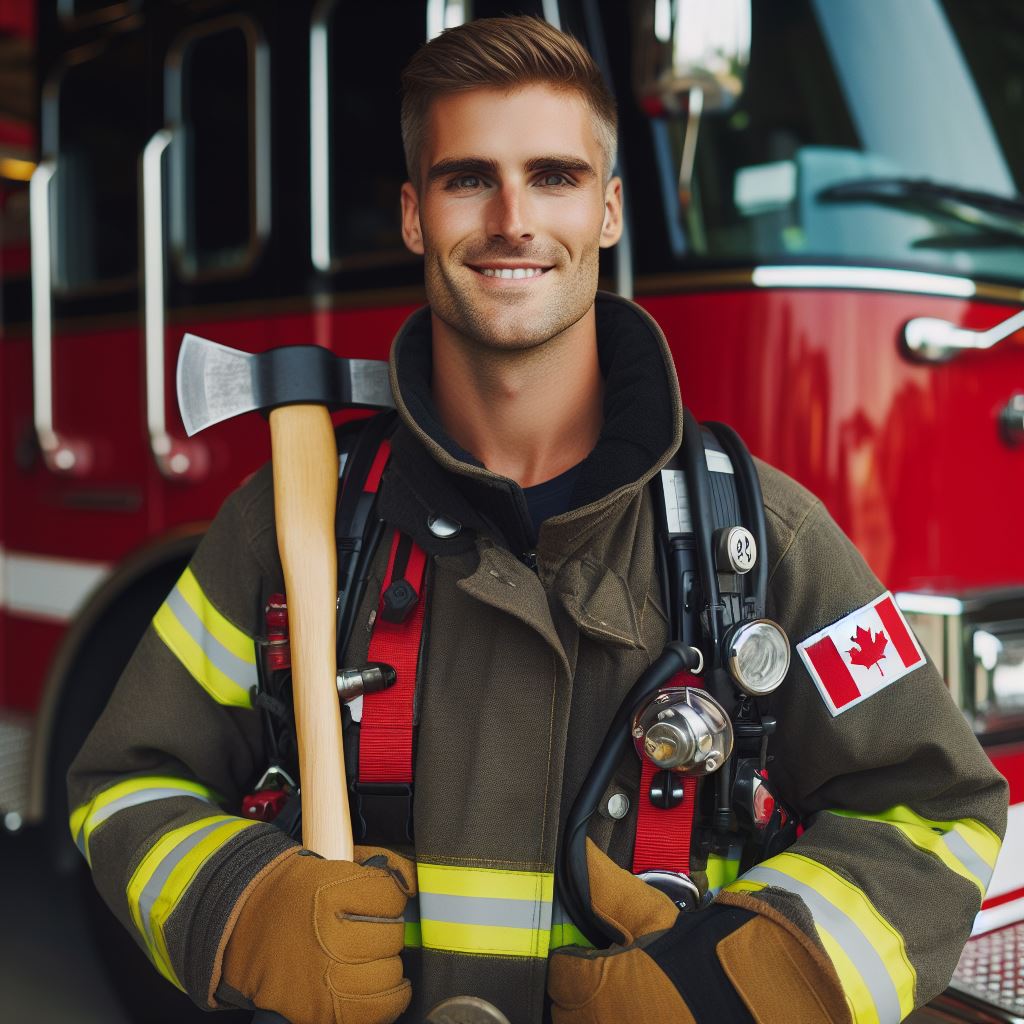Introduction
In Canada, women firefighters courageously defy stereotypes, proving their mettle in a historically male-dominated profession.
Their growing numbers underscore a seismic shift towards inclusivity, challenging preconceptions and fostering a more diverse firefighting landscape.
These women, adept at handling intense situations, bring invaluable perspectives to their teams.
Their inclusion not only promotes gender equality but also enhances the overall efficiency of firefighting units.
As Canada continues to celebrate diversity, the triumphs of firefighters serve as beacons of inspiration, reshaping the narrative and instilling confidence in aspiring female firefighters.
This evolution is not just about breaking barriers; it’s about forging a path where gender becomes irrelevant in the face of skill, dedication, and a shared commitment to public safety.
Historical Overview of Women in Canadian Firefighting
Early Exclusion of Women from Firefighting Roles
- In the early years, women were largely excluded from firefighting roles in Canada.
- The prevalent belief was that firefighting was physically demanding and best suited for men.
- Gender stereotypes and societal norms limited women’s access to firefighting positions.
Key Milestones and Breakthroughs in Promoting Gender Equality in the Field
- The breakthrough came in 1974 when the first woman, Captain Karen Fry, joined the Toronto Fire Department.
- This milestone paved the way for other women to pursue firefighting careers.
- In 1981, Terry Clark became the first female firefighter in Vancouver, challenging gender norms.
- The late 20th century saw more women entering firefighting across Canada, sparking change and recognition.
- Efforts to promote gender equality gained momentum in the 1990s and 2000s, leading to significant breakthroughs.
- Organizations like Canadian Association of Fire Chiefs recognized the need for diversity and gender representation.
Current Representation of Women in Canadian Firefighting Departments
- While progress has been made, women remain underrepresented in Canadian firefighting departments.
- In 2019, women accounted for only 4.3% of career firefighters across the country.
- This lack of representation persists due to various barriers, including stereotypes and physical requirements.
- The firefighting culture can be resistant to change, making it challenging for women to break through.
- Initiatives such as recruitment campaigns, mentorship programs, and cultural shifts aim to increase female representation.
- Female firefighters continue to prove their capabilities and contribution, challenging stereotypes and inspiring future generations.
Canadian firefighting has evolved in gender representation, progressing from exclusion to breakthroughs. Despite strides, achieving true gender balance remains a challenge.
Firefighting departments and society must address barriers, fostering an inclusive environment. Encouraging more women to pursue firefighting careers is crucial.
With sustained efforts and support, women can contribute their skills, making Canadian firefighting more diverse and representative.
Challenges Faced by Women in Canadian Firefighting
The gender stereotypes and biases that affect women in this male-dominated field
- Women in Canadian firefighting face numerous challenges due to gender stereotypes and biases.
- One common stereotype is that women are physically weaker and less capable in firefighting.
- These biases often lead to women being overlooked for promotions and important assignments.
- The perception that firefighting is a male job discourages many women from pursuing a career in this field.
- Moreover, society’s expectations of women as caretakers clash with the demanding nature of firefighting.
Physical and psychological challenges faced by female firefighters
- Female firefighters frequently encounter physical challenges due to the demanding nature of the job.
- There is a need for specialized equipment and gear that can accommodate women’s body sizes and shapes.
- Psychologically, female firefighters may face emotional and mental stress related to the nature of emergencies.
- The constant exposure to traumatic events can take a toll on their well-being.
- Additionally, female firefighters may experience pressure to prove themselves in order to be accepted by their male counterparts.
Address workplace culture and instances of harassment or discrimination
- Workplace culture plays a significant role in the experiences of women in Canadian firefighting.
- Instances of harassment and discrimination are unfortunately not uncommon.
- Women may face derogatory comments, exclusion, or unfair treatment due to their gender.
- It is essential for fire departments to establish a respectful and inclusive work environment.
- Proper training and education should be provided to address unconscious biases and mitigate harassment.
Women in Canadian firefighting undoubtedly face significant challenges due to gender stereotypes, physical demands, and workplace culture.
However, by addressing these issues and promoting equality, the fire service can become a more inclusive and diverse field, benefiting both women and the communities they serve.
Read: Top Firefighting Schools Across Canada
Initiatives and Programs Promoting Women in Canadian Firefighting
Examples of Organizations and Programs Dedicated to Increasing Female Representation
- The Women in Firefighting Initiative, a national non-profit organization, aims to support and empower women in the profession.
- The Canadian Association of Women in Fire and Emergency Services provides networking opportunities and mentorship programs for female firefighters.
- The Women in Fire Leadership Conference brings together female firefighters from across Canada to share experiences and promote leadership.
The Impact and Effectiveness of These Initiatives
These initiatives have made significant progress in increasing female representation in Canadian firefighting.
By providing support, mentorship, and networking opportunities, they create a more inclusive and supportive environment for women.
They encourage women to pursue firefighting careers by breaking gender stereotypes and showcasing successful women in the field.
These programs also address the unique challenges faced by women in firefighting, such as physical fitness requirements and bias within the industry.
The initiatives have resulted in a steady increase in the number of women joining Canadian firefighting departments.
Success Stories and Celebrating Women in Firefighting Roles
- Janice Wilson is a trailblazer who became the first female fire chief in Canada, inspiring countless women to pursue leadership roles.
- Sarah Thompson overcame societal barriers and became a respected firefighter known for her bravery and dedication.
- The achievements of women like Janice and Sarah exemplify the resilience and competence of female firefighters.
In Canadian firefighting, women shatter gender barriers, showcasing their prowess and indispensability in the field.
Their accomplishments echo loudly, underlining the need to recognize and encourage more women to join firefighting ranks.
Celebrating these triumphs is pivotal, fostering diversity and equality within the firefighting profession.
Key players like the Women in Firefighting Initiative, Canadian Association of Women in Fire and Emergency Services, and Women in Fire Leadership Conference champion this cause.
These entities actively elevate female representation, offering essential support, mentorship, and networking avenues.
Success stories serve as beacons, kindling inspiration for aspiring female firefighters, shaping the future of firefighting.
Ongoing initiatives propel gender equality, forging a path towards a more inclusive and diverse firefighting community.
Read: Fitness Tips for Aspiring Firefighters
Unlock Your Career Potential
Visualize a clear path to success with our tailored Career Consulting service. Personalized insights in just 1-3 days.
Get Started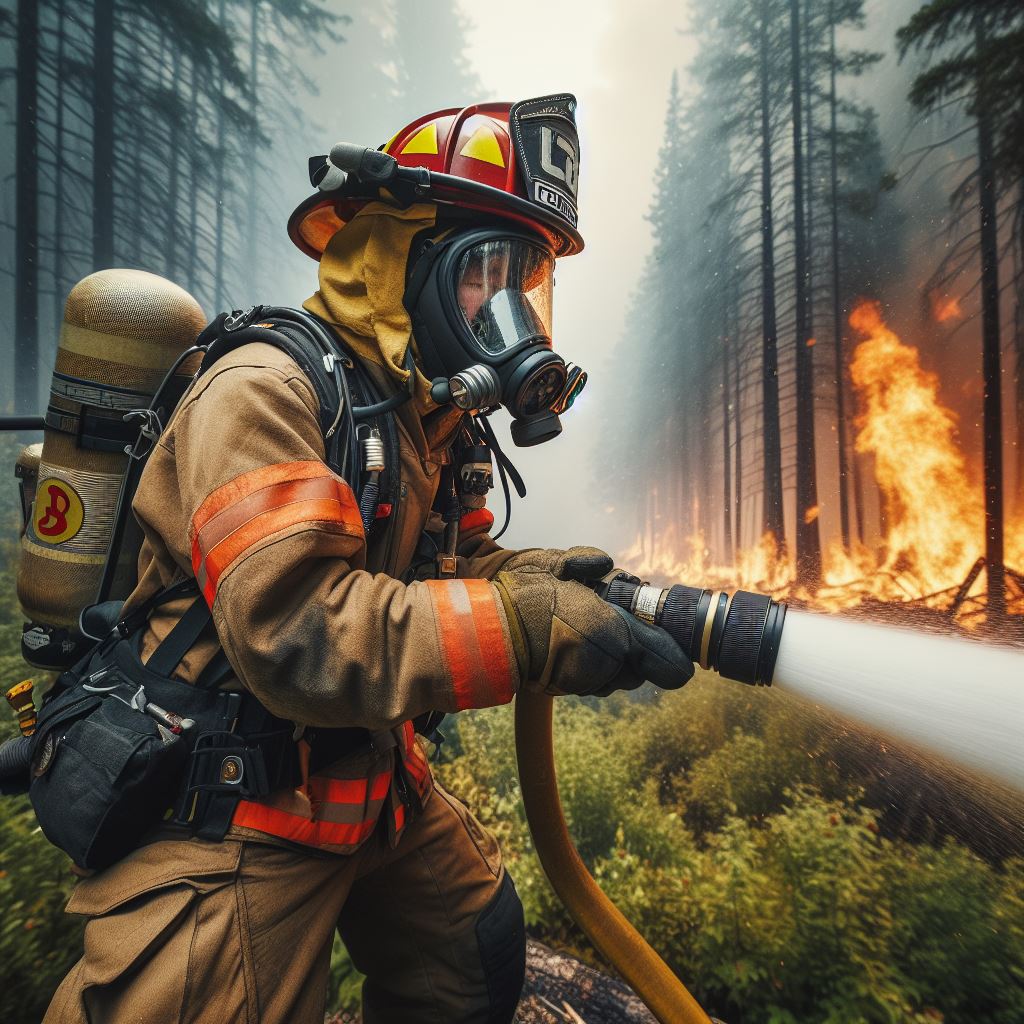
Breaking Stereotypes: Stories of Inspirational Women Firefighters
Share stories of successful women in Canadian firefighting
- Maria Thompson, the first female firefighter in Toronto, who paved the way for others.
- Emily White, a courageous firefighter from Vancouver, known for her outstanding bravery.
- Sarah Johnson, who overcame incredible odds to become a respected firefighter in Calgary.
- Jessica Lee, an exceptional firefighter from Montreal, recognized for her leadership skills.
- Rebecca Adams, a trailblazer in Edmonton firefighting, dedicated to saving lives.
Their journey, the challenges they faced, and how they overcame them
- Maria Thompson experienced discrimination and skepticism but remained resilient in her pursuit.
- Emily White encountered physical strength stereotypes but proved her capabilities through exceptional skills.
- Sarah Johnson struggled with prejudice and doubters but let her determination fuel her motivation.
- Jessica Lee faced stereotypes that questioned her authority, but she proved herself through hard work.
- Rebecca Adams pushed through gender biases and barriers, demonstrating her dedication to serve.
Their contributions and the positive impact they have made in their communities
- Maria Thompson initiated programs to recruit more women in firefighting, promoting diversity.
- Emily White actively mentors aspiring female firefighters, encouraging them to pursue their dreams.
- Sarah Johnson leads community fire safety awareness campaigns, making a lasting impact in Calgary.
- Jessica Lee organizes firefighting workshops for young girls, empowering them to break stereotypes.
- Rebecca Adams actively participates in community events, fostering trust and inclusivity within Edmonton.
These brave firefighters continue to inspire others and challenge gender stereotypes in the firefighting profession.
Through their stories, we see their determination, resilience, and the positive impact they have made in their communities.
Read: How to Become a Firefighter in Canada
Promoting Equality: Strategies for Encouraging Women in Firefighting
Potential strategies to attract more women to firefighting careers
- Implement targeted recruitment initiatives to actively reach out to women interested in firefighting.
- Collaborate with educational institutions to promote firefighting as a viable career option for women.
- Create informative campaigns that challenge stereotypes and showcase successful women in firefighting roles.
- Offer scholarships or financial incentives specifically for women pursuing firefighting careers.
- Establish partnerships with women’s organizations and community groups to raise awareness about firefighting opportunities.
The importance of mentorship and support networks for female firefighters
- Encourage current female firefighters to act as mentors and role models for aspiring women in the field.
- Develop formal mentorship programs where experienced female firefighters provide guidance and support to newcomers.
- Establish support networks where female firefighters can connect, share experiences, and seek advice.
- Organize regular networking events and conferences to foster a sense of community among female firefighters.
- Provide resources and training for male colleagues to become allies and advocates for their female counterparts.
The need for ongoing training and professional development opportunities
- Offer specialized training programs that address the unique challenges and requirements faced by female firefighters.
- Develop leadership development programs to empower women to take on management roles within firefighting organizations.
- Provide accessible and inclusive fitness training to ensure females can meet the physical demands of firefighting.
- Partner with professional associations and firefighting agencies to offer professional development opportunities for women.
- Continuously evaluate and adapt training programs to promote gender equality and inclusivity in firefighting.
By implementing these strategies, we can actively promote equality and encourage more women to pursue careers in firefighting.
It is essential to create an inclusive and supportive environment that recognizes the value and contributions of female firefighters.
Together, we can build a fire service sector that embraces diversity and empowers women in their pursuit of this noble profession.
Read: Firefighters’ Role in Canadian Communities
Conclusion
Strides have been made in Canadian firefighting, with women shattering gender stereotypes.
Progress is evident, yet achieving complete gender equality remains a journey.
Passionate women are increasingly joining firefighting departments, contributing uniquely to the profession. Recognition of their valuable input grows with heightened representation.
Progress is commendable, as departments actively attract and support women, fostering diverse, inclusive cultures.
However, efforts must persist in dismantling biases and addressing barriers women face.
This ongoing commitment ensures a resilient and effective fire service.
Equality is not just about fairness; it’s crucial for public safety. Diverse skills and perspectives enhance firefighting teams, making equality imperative.
Embracing diversity ensures the fire service evolves to meet society’s changing needs. Together, a future of equal opportunities in this noble profession is within reach.

